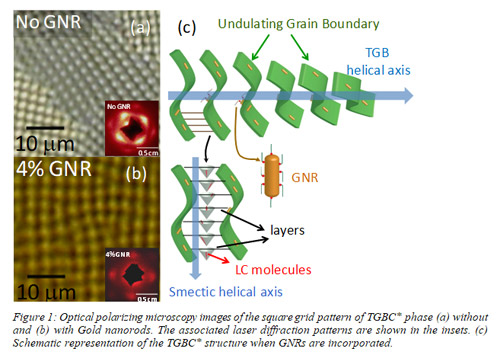 Photonic crystals are attracting much attention for new generation optical devices. Such crystals could exhibit a bandgap, referred to as photonic bandgap (PBG), wherein selected wavelengths of light are not transmitted through the material, a well-known example being Opals, mimicking, for example, the bright iridescent colours of a peacock feather.
Photonic crystals are attracting much attention for new generation optical devices. Such crystals could exhibit a bandgap, referred to as photonic bandgap (PBG), wherein selected wavelengths of light are not transmitted through the material, a well-known example being Opals, mimicking, for example, the bright iridescent colours of a peacock feather.Researchers led by Dr D.S Shankar Rao at Centre for Nano and Soft Matter Sciences (CeNS) an autonomous research institute under Department of Science and Technology (DST), Government of India along with researchers from National Chemical Laboratory(NCL) Pune have adapted a novel pathway to tune the photonic bandgap (PBG), providing a powerful tool for designers of optical devices. Such tuning can result in mirrors which reflect light of the desired colour.
They have altered the grid spacing and, consequently, the laser diffraction pattern by infusing Gold Nanorods (GNRs) into a special variety of twist grain boundary (TGB) liquid crystalline phases for the purpose. TGB are self-assembled structure in which PBG are realized. The appealing aspect of the TGB phase is that the PBG feature is easily seen by viewing a thin film of the material under a polarizing optical microscope.
The employed nanorods, prepared by the team of Dr B.L.V. Prasad at NCL, have an additional built-in feature of plasmonics. The combination opens up an interesting line of materials with new characteristics.
Ms. Rajalaxmi Sahoo, a senior research fellow and the prime author in an article on these results published early this year in the Journal of Molecular Liquids, strongly feels that incorporating nanorods is a powerful method to realize tunable periodic and anisotropic plasmonic nano soft structures in the near feature.
Dr Krishna Prasad, another senior author of the research work, says, “a crude analogy to what has been achieved is to imagine a cube covered with peacock feathers wherein along each direction the colours of the feathers can be designed, controlled and manipulated. This provides a powerful tool in the hands of the designers.”
For more details, Dr D.S Shankar Rao (shankar[at]cens[dot]res[dot]in) can be contacted.






























